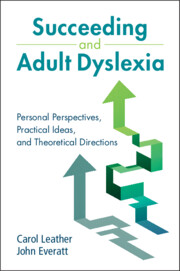2 - Adult Dyslexia
from Part I
Published online by Cambridge University Press: 11 January 2024
Summary
Chapter 2 explores the potential positive and negative characteristics of dyslexia in adulthood. It will discuss a framework for understanding dyslexia in terms of the impact of biology and cognition, as well as the environment. This is linked to the key elements discussed in chapter 1, providing a basis for understanding the impact that dyslexia can have on learning and performance both in education and the workplace, and how these can interact: poor qualifications restricting access to employment. The aim is to provide an explanation for challenges that many with dyslexia faces and how these may impact on employment, as well as on confidence and self-esteem. It will also highlight the potential strengths that a dyslexic individual can bring to work performance and daily life. As part of this discussion, a profile of skills/abilities is also presented. This includes many of the tests that comprise a typical dyslexia diagnosis, which can form the basis for understanding such assessments. The aim is that, by the end of this chapter, the reader will have a good foundation in understanding adult dyslexia, its potential consequences and some possible solutions to those challenges.
Keywords
- Type
- Chapter
- Information
- Succeeding and Adult DyslexiaPersonal Perspectives, Practical Ideas, and Theoretical Directions, pp. 25 - 58Publisher: Cambridge University PressPrint publication year: 2024



